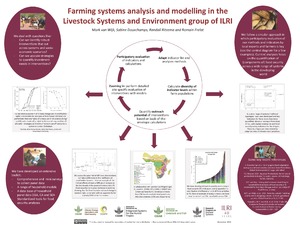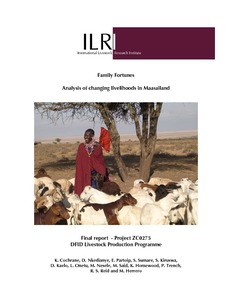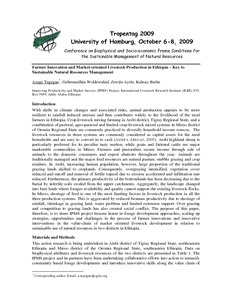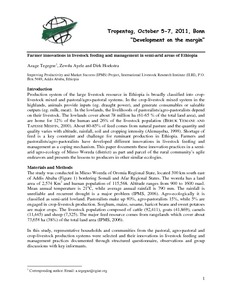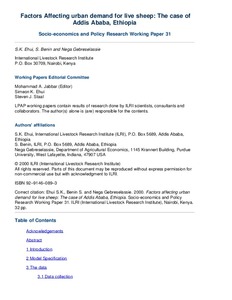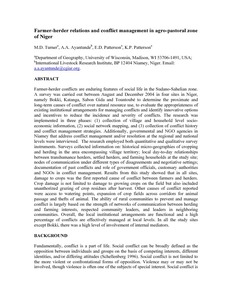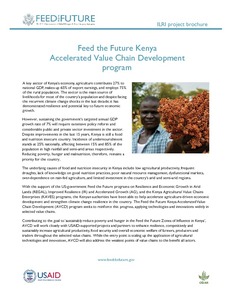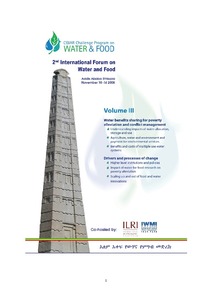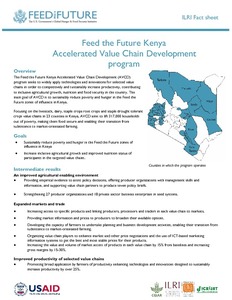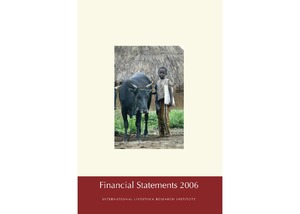Tierras de pastos
AGROVOC URI:
Family fortunes: analysis of changing livelihoods in Maasailand
Farmer innovation and market-oriented livestock production in Ethiopia-key to sustainable natural resources management
Farmer innovations in livestock feeding and management in semi-arid areas of Ethiopia
Factors affecting milk market participation and volume of supply in Ethiopia
Farmer participatory research: measuring impact
The major issues in impact assessment for farmer participatory research (FPR) are analyzed. There are many potential ways in which FPR can have an impact; for example, increasing agricultural productivity, improving the management of natural resources or leading to a wider dissemination of innovations. FPR may also be more effective in reaching specific target groups, and it many reduce research costs and develop community capacity. Impact will be measured by different groups, and for different reasons, according to the circumstances.
Factors affecting urban demand for live sheep: The case of Addis Ababa, Ethiopia
As the share of small ruminant meat, especially sheep, in the demand and consumption of meat in general grows, information about consumer expenditure behaviour and demand parameters for live sheep will be valuable for several interest groups in the sheep industry. Using the Heckman two-stage approach, this study shows that sheep prices and household income, as well as socio-demographic factors, including household size and composition, significantly affect the likelihood of buying live sheep and expenditures on live sheep.
Farmer-herder relations and conflict management in agro-pastoral zone of Niger
Farmer-herder conflicts are enduring features of social life in the Sudano-Sahelian zone.
A survey was carried out between August and December 2004 in four sites in Niger,
namely Bokki, Katanga, Sabon Gida and Tountoubé to determine the proximate and
long-term causes of conflict over natural resource use, to evaluate the appropriateness of
existing institutional arrangements for managing conflicts and identify innovative options
and incentives to reduce the incidence and severity of conflicts. The research was

